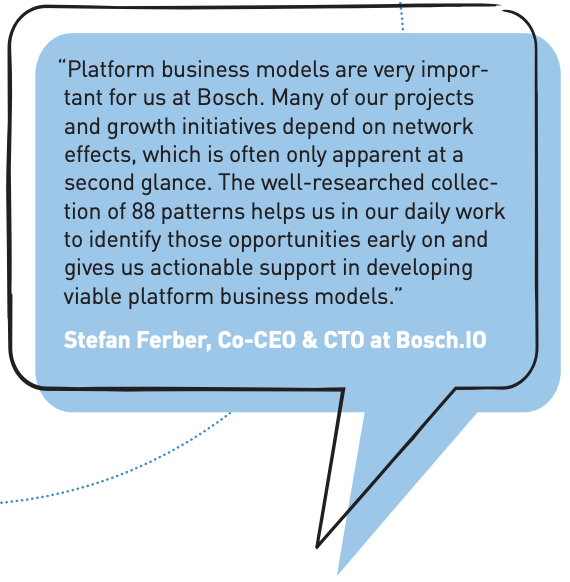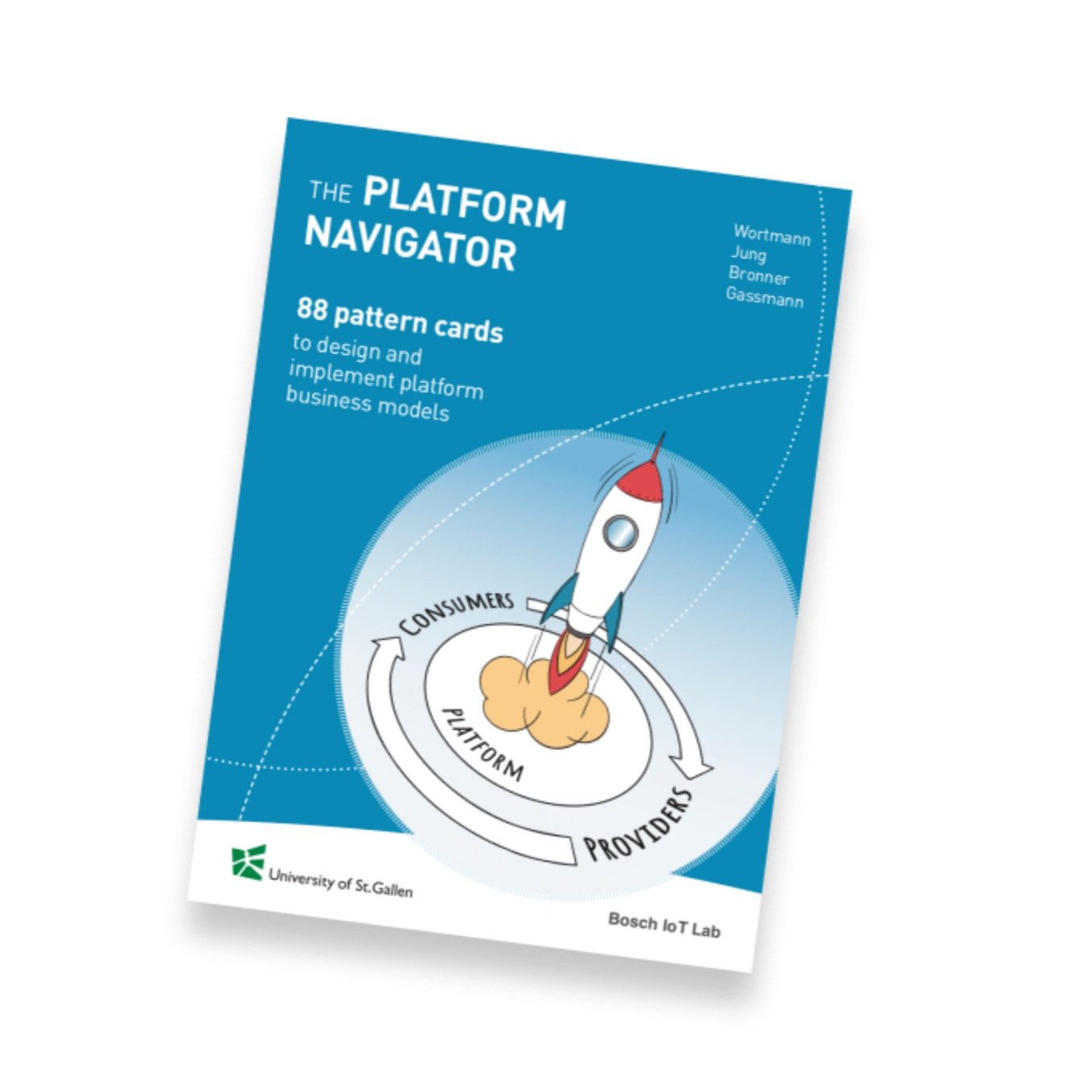What do eight out of ten of the most valuable companies worldwide have in common? They are built upon a platform business model.
Platform companies have been able to outperform traditional businesses by establishing themselves as digital intermediaries and facilitating transactions between stakeholders. Because traditional business models with a linear value chain are difficult to transform into platform business models, established companies are affected by this shift. This is why the rise of platforms has the potential to disrupt various industries.
Definition - What is a Platform?
Platforms are intermediaries that provide an infrastructure, bring different sides of a market together and facilitate transactions. The success of a platform depends on network effects: More users equal a higher value of the platform. The different customer groups attract each other, resulting in a vital, successful platform. For example more buyers on Amazon lead to more sellers and vice versa.
Platforms will affect many traditional businesses and the leveraging network effects will be crucial for every company.
Different Types of Platforms
There are two fundamentally different types of platforms:
Transaction Platforms
Also known as marketplaces with buyers and sellers (e.g. Ebay) or providers and consumers (e.g. Airbnb)
Innovation Platforms
These serve as a basis for others to innovate and develop applications on top (e.g. Amazon Web Services)
Furthermore platform businesses need an effective revenue model. As Platforms thrive from the network effect (attracting users) the monetization strategy must not put users off. This can be achieved through:
Direct monetization (e.g. users pay for apps)
Indirect monetization (e.g. the content is free but users need to consume advertisements).
88 Patterns: What is ‘The Platform Navigator’?
Developed by the University of St.Gallen and the Bosch IoT Lab, 'The Platform Navigator’ is a proven tool for the design and implementation of platform business models. Implementing a platform business model is a continuous journey that can take time and require multiple iterations. This is why the pattern cards are built up in five phases to provide the guidance and inspiration you need for your business setting.
How to Apply the Platform Navigator in 5 Steps:
Steps 1-3 of the navigator are all about WHAT and the design of a platform business model. The steps 4 and 5 are about HOW and the implementation of a platform business model.
Ideate: Which opportunities exist?
These 21 pattern cards serve as inspiration in seven categories to identify opportunities for your own business.
Design: How do we create value?
Based upon the differentiation of transaction or innovation platforms you may use these cards to determine your core value proposition, ownership model and the operating model for your platform.
Monetize: How do we capture value?
Go through the patterns including direct and indirect monetization tactics to discuss how you want to capture value. Think of pros and cons, the feasibility of different monetization possibilities including the combination of different patterns.
Scale: How do we grow?
Get inspired by these patterns to choose strategies that focus on one side, attract key users, leverage existing assets, focus on both sides or exploit opportunistic opportunities.
Manage: How do we manage?
Learn from best practices how to innovate, defend the platform core, maintain network effects and monitor performance. These patterns will help you to understand what will become important in your future platform journey.
Using the canvas to bring everything together
In addition to the pattern cards, the canvas can be used to capture the platform idea in a clear and structured manner.
The canvas is built upon traditional business model blocks such as the value proposition (What do we offer?), value creation (How do we create value?) and value capturing (Why does it generate value?). It also includes platform-specific components such as the value flow, how to grow and platform management.
This canvas might support communication with your stakeholders and also help with discussing, testing and refining the platform idea further with customers and partners.
Tips for Best Practice
Organize a creative workshop
The best way to use ‘The Platform Navigator’ is in a creative workshop setting with groups with ideally three to five diverse participants. These groups can go through phases independently with the objective to compare the results at the end. Or if a basic platform business model is already sketched out, smaller groups can also deal with selective phases of the navigator with the objective to integrate the results into one consistent overall picture.
Create the right atmosphere
Select participants from different backgrounds to boost creativity and outside-the-box thinking. The participants should be open-minded and creative. Treat platform ideas without judgment and write them down immediately. Only in the end, evaluate and shortlist one to three ideas. Ideally participants familiarize themselves with some platform basics beforehand.
Pick your playing field
It is recommend to think through all five phases at once. However, feel free to adjust the overall process to your specific setting and requirements. ‘The Platform Navigator’ is designed so that you can take out only the sections that are most important for you.
Think beyond the pattern cards
For a holistic view on platforms, it is important to know all patterns. Some patterns provide a very specific strategy and example, others provide more general guidance. Be aware that some pattern cards will be more, less or not relevant for your business or setting. If it is useful, different pattern cards can also be combined.
Learn more about ‘The Platform Navigator’ at Bosch IoT Lab.
Order your copy of ‘The Platform Navigator’ in our webshop.
If you want to exchange your thoughts on ‘The Platform Navigator’ and its impact on your business model - reach out to our platform business model expert.







